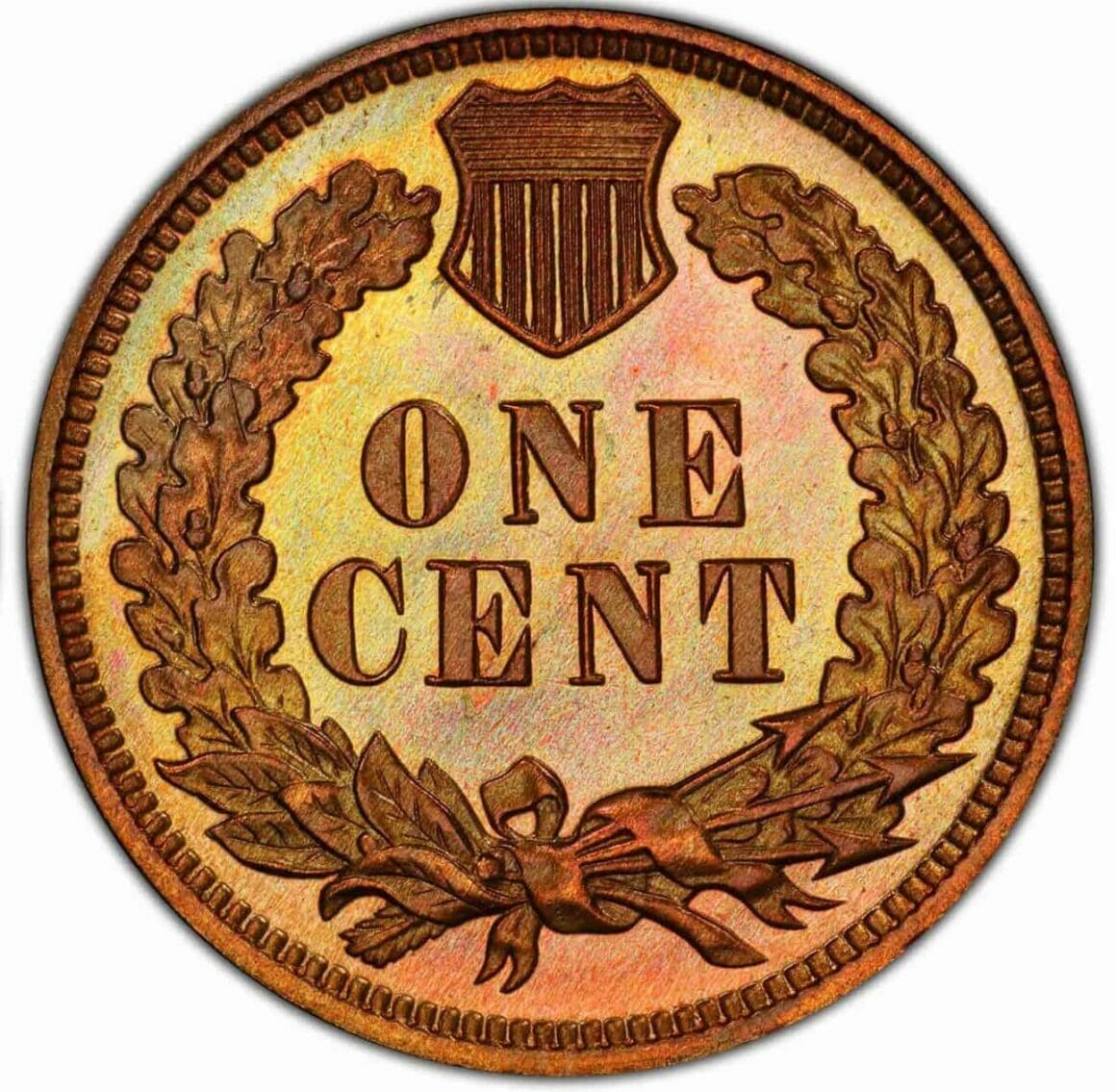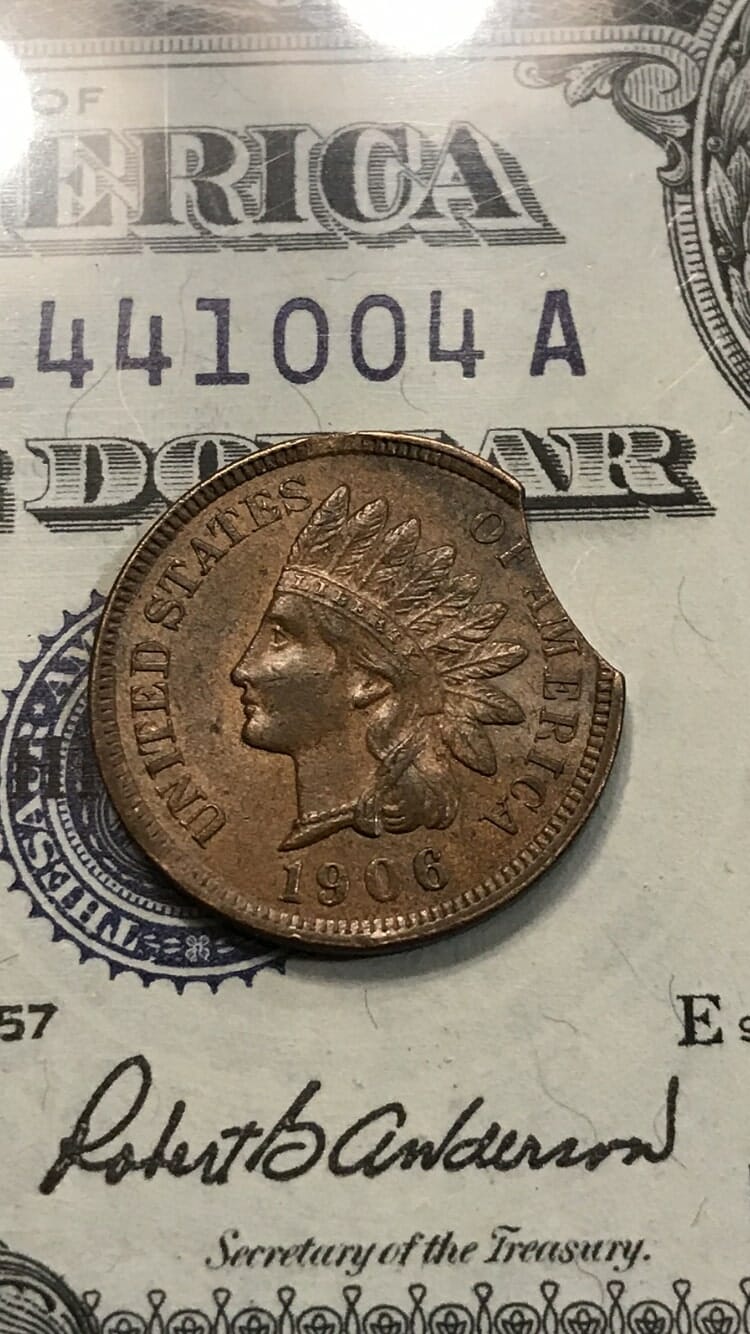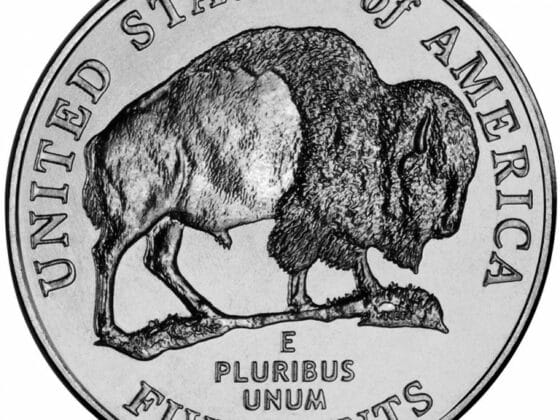The U.S. penny, a symbol of the nation’s history, has seen various designs since its debut in 1793. The penny’s evolution reflects America’s changing ideals from Lady Liberty’s early visage to the chain links representing unity. The highlight of our discussion, the 1906 Indian Head penny, emerges from this rich tapestry. Adopted in 1859, the Indian Head design became an emblem for 50 years.
Dive deeper to explore the significance, value, and unique attributes of the 1906 Indian Head penny – a captivating chapter in coinage history.
Table of Contents
The 1906 Indian Head Penny – History, Composition & Design
In 1906, the Philadelphia Mint was the sole facility responsible for producing pennies, minting a total of 96,022,255 specimens. Of these, only 1,725 were struck as proof coins. Since the Philadelphia Mint did not use mint marks during that period, all 1906 pennies are unmarked.
Composition and Dimensions of the 1906 Indian Head Penny
The material composition of the Indian Head penny underwent two significant changes over its lifetime. Initially crafted from a copper-nickel alloy, the coin switched to a bronze composition that lasted until the end of its production run. Specifically, the 1906 Indian Head penny comprises 95% copper, 2.5% zinc, and 2.5% tin, with a weight of 3.11 grams and a diameter of 19 millimeters.
The 1906 Indian Head Penny Design

Obverse Side
The obverse of a 1906 penny features Lady Liberty wearing a ceremonial Native American headdress facing left. The word LIBERTY is inscribed at the edge of the bonnet. UNITED STATES is written on the left and OF AMERICA on the right side of the coin. The bottom of the coin is inscribed with the year 1906.

Reverse Side
The reverse includes a beautiful wreath circling the edges of the coin. On the top, where the flowers separate, is a shield with thirteen stripes, representing the original colonies and their strength as a unity. You can see the denomination at the center of the coin.

More Indian Head Penny Articles
- The 1899 Indian Head Penny
- The 1901 Indian Head Penny
- The 1902 Indian Head Penny
- The 1903 Indian Head Penny
- The 1904 Indian Head Penny
- The 1907 Indian Head Penny
1906 Indian Head Penny Value
The value of a 1906 Indian Head penny can vary dramatically based on its condition and rarity, with most general specimens fetching only a few dollars. However, unique or well-preserved examples can command high prices, including a one-of-a-kind error coin struck over a 1905 Mexican peso that sold for $72,500 and a mint-condition specimen that auctioned for $27,600.
What Makes a 1906 Indian Head Penny Valuable?
A 1906 Indian Head penny gains significant value only when it’s in pristine, mint condition — appearing as if it was freshly minted rather than being over a century old. Such examples are exceedingly rare, making most 1906 Indian Head pennies worth only a few dollars at best.
Yet, the coin’s worth extends beyond its monetary value; it’s a cherished artifact in the world of numismatics. The Indian Head series witnessed transformative periods in American history, including the Civil War, the Great Depression, and the Temperance Movement. This lends each coin a rich historical context, making it not just a collector’s item but a tangible link to the pivotal events that have shaped the modern world.
Additionally, assembling a complete set of Indian Head pennies presents an engaging challenge for novice and veteran collectors. Such collections can also be lucrative, appealing to those interested in history and profit. Therefore, if investment is your aim, starting your collection sooner rather than later is advisable.
How Much Is a 1906 Indian Head Penny Worth?
The primary factor influencing the value of a coin is its rarity. Given that the 1906 Indian Head penny was produced in large numbers, most specimens readily available on the market are not exceedingly valuable.
However, finding a 1906 Indian Head penny in mint condition is rare. Well-preserved examples are hard to come by more than a century after their minting, and such specimens can command prices in the thousands of dollars.
In general, if the intricate details and inscriptions on your 1906 penny are faded or worn, its value is likely limited to just a few dollars. Conversely, if the engravings remain crisp and the coin retains its original luster, it could potentially be worth a significant sum.
Additionally, a limited number of proof pennies were struck in 1906. Depending on their condition, these proof coins hold a higher value, typically ranging from around $50 to over $1,000.
1906 Indian Head Penny Value Chart
Here is a chart of the approximate values of a 1906 coin depending on its condition. These prices are not definitive as more factors go into forming the price of a coin, such as collectors’ interest and current popularity.
The highest price realized at an auction for a 1906 Indian Head penny was $27,600 at Heritage Auctions in 2006. That specimen was graded MS67.
| Condition | 1906 Indian Head Penny Value |
| Poor (1) | $0.01 – $1 |
| Good (4) | $1 – $5 |
| Fine (12) | $5 – $10 |
| Extremely fine (40) | $10 – $30 |
| About uncirculated (50) | $30 – $50 |
| Mint state (60) | $50 – $100 |
| Mint state (65) | $100 – $500 |
| Mint state (66+) | $500 + |
1906 Indian Head Penny: Error List
The Indian Head penny series boasts a plethora of mint errors that have captivated collectors for years. These anomalies often elevate the coin’s value substantially. To ensure you properly identify any errors, it’s advisable to seek verification from reputable third-party grading services before selling your prized pieces.
Unveiling the Unique 1906 Indian Head Penny Error
A recent sensational discovery involves a 1906 Indian Head penny that was struck over a 1905 Mexican peso. What makes this coin truly extraordinary is not only the mismatched, foreign planchet and its differing year but also its gold composition. This one-of-a-kind numismatic marvel fetched a staggering $72,500 in a 2022 auction by Great Collections.
Though it’s believed that this anomaly may not be a mint error but rather an intentional act by an employee, the mysterious circumstances surrounding its creation undeniably add to its intrigue.
This specimen showed signs of wear, indicating that it had changed hands multiple times before someone realized its unique value and provenance. This serves as a compelling reminder of the critical role played by coin grading services.
Additional Errors to Look for in 1906 Indian Head Pennies
You might encounter other intriguing mint errors when exploring 1906 Indian Head pennies.
Off-Center Error
An off-center error occurs when the coin’s dies fail to align properly with the planchet. This results in a coin that is partially struck and partially blank, a captivating anomaly that can potentially increase the coin’s worth by hundreds of dollars, depending on the error’s severity.
Clipped Planchet Error

A clipped planchet error is another curious anomaly you may find in 1906 pennies. As the name suggests, a portion of the coin is missing, having been clipped during the minting process. This error can also significantly enhance the coin’s value.
Double Die Error
Double-die errors are among the most prevalent you’ll find in coinage. Caused by dies striking the coin more than once, this error creates a doubled image on the design. Be vigilant when inspecting your collection, whether it’s a partial or full doubling; double-die coins often command higher prices than their standard counterparts.
The 1906 Indian Head Penny: FAQs
Is a 1906 penny rare?
No, a 1906 penny is not rare. The Philadelphia branch produced almost a hundred million of these coins, making them easy to come across. However, 1906 Indian Head cents that don’t show signs of circulation are extremely tough to find.
Where is the mint mark on a 1906 Indian head penny?
There is no mint mark on 1906 Indian Head pennies. They were minted in Philadelphia, which did not use mint marks back then.
Who was on the 1906 penny?
A 1906 penny features Lady Liberty wearing a traditional Native American war bonnet.
Should I clean a 1906 Indian head penny before getting it graded?
No! Before getting them graded, you should never clean coins by yourself, including a 1906 Indian Head penny. It’s essential that the natural color and condition are visible and not messed with. It’s also easy to leave scratches and signs of damage when cleaning a coin, which can significantly reduce the overall value of the specimens you want to be graded.
Conclusion
A 1906 cent belongs to the Indian Head penny series. These cents were produced only in Philadelphia, so there is no mint mark on any of them. Since they were minted in large quantities, 1906 pennies in average condition are easy to find and not expensive. On the other hand, the best-preserved specimens can cost thousands of dollars.
The most interesting 1906 Indian Head penny was discovered recently and sold for over $70,000 in 2022. It was struck on a gold Mexican planchet in 1905 and wasn’t uncovered for over a century, making it a fascinating piece of coinage.
If you are a coin collector, always grade your coins. Services such as PCGS and NGC are professional, reliable, and highly experienced in detecting rare and valuable coin errors, so take advantage of their expertise. You may have the next lost treasure in your collection and not even know it!











